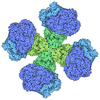[English] 日本語
 Yorodumi
Yorodumi- PDB-9ozy: Gradient equilibration of hexagonal thermolysin to low salt over ... -
+ Open data
Open data
- Basic information
Basic information
| Entry | Database: PDB / ID: 9ozy | ||||||
|---|---|---|---|---|---|---|---|
| Title | Gradient equilibration of hexagonal thermolysin to low salt over 15 minutes | ||||||
 Components Components | Thermolysin | ||||||
 Keywords Keywords | HYDROLASE / Glycosidase | ||||||
| Function / homology |  Function and homology information Function and homology informationthermolysin / metalloendopeptidase activity / proteolysis / extracellular region / metal ion binding Similarity search - Function | ||||||
| Biological species |   Geobacillus stearothermophilus (bacteria) Geobacillus stearothermophilus (bacteria) | ||||||
| Method |  X-RAY DIFFRACTION / X-RAY DIFFRACTION /  MOLECULAR REPLACEMENT / Resolution: 1.75 Å MOLECULAR REPLACEMENT / Resolution: 1.75 Å | ||||||
 Authors Authors | Juers, D.H. | ||||||
| Funding support |  United States, 1items United States, 1items
| ||||||
 Citation Citation |  Journal: Acta Crystallogr.,Sect.F / Year: 2025 Journal: Acta Crystallogr.,Sect.F / Year: 2025Title: Automated gradient equilibration of macromolecular crystals to new solution conditions. Authors: Juers, D.H. / Quire, J. / Stothers, S. | ||||||
| History |
|
- Structure visualization
Structure visualization
| Structure viewer | Molecule:  Molmil Molmil Jmol/JSmol Jmol/JSmol |
|---|
- Downloads & links
Downloads & links
- Download
Download
| PDBx/mmCIF format |  9ozy.cif.gz 9ozy.cif.gz | 160 KB | Display |  PDBx/mmCIF format PDBx/mmCIF format |
|---|---|---|---|---|
| PDB format |  pdb9ozy.ent.gz pdb9ozy.ent.gz | 102.1 KB | Display |  PDB format PDB format |
| PDBx/mmJSON format |  9ozy.json.gz 9ozy.json.gz | Tree view |  PDBx/mmJSON format PDBx/mmJSON format | |
| Others |  Other downloads Other downloads |
-Validation report
| Summary document |  9ozy_validation.pdf.gz 9ozy_validation.pdf.gz | 456.1 KB | Display |  wwPDB validaton report wwPDB validaton report |
|---|---|---|---|---|
| Full document |  9ozy_full_validation.pdf.gz 9ozy_full_validation.pdf.gz | 457.5 KB | Display | |
| Data in XML |  9ozy_validation.xml.gz 9ozy_validation.xml.gz | 18.3 KB | Display | |
| Data in CIF |  9ozy_validation.cif.gz 9ozy_validation.cif.gz | 25.8 KB | Display | |
| Arichive directory |  https://data.pdbj.org/pub/pdb/validation_reports/oz/9ozy https://data.pdbj.org/pub/pdb/validation_reports/oz/9ozy ftp://data.pdbj.org/pub/pdb/validation_reports/oz/9ozy ftp://data.pdbj.org/pub/pdb/validation_reports/oz/9ozy | HTTPS FTP |
-Related structure data
| Related structure data |  9oz5C  9ozwC C: citing same article ( |
|---|---|
| Similar structure data | Similarity search - Function & homology  F&H Search F&H Search |
- Links
Links
- Assembly
Assembly
| Deposited unit | 
| ||||||||||||
|---|---|---|---|---|---|---|---|---|---|---|---|---|---|
| 1 |
| ||||||||||||
| Unit cell |
| ||||||||||||
| Components on special symmetry positions |
|
- Components
Components
-Protein , 1 types, 1 molecules E
| #1: Protein | Mass: 34362.305 Da / Num. of mol.: 1 / Source method: isolated from a natural source / Source: (natural)   Geobacillus stearothermophilus (bacteria) / References: UniProt: P43133, thermolysin Geobacillus stearothermophilus (bacteria) / References: UniProt: P43133, thermolysin |
|---|
-Non-polymers , 6 types, 250 molecules 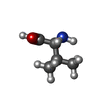
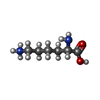


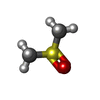
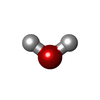





| #2: Chemical | ChemComp-VAL / | ||||||
|---|---|---|---|---|---|---|---|
| #3: Chemical | ChemComp-LYS / | ||||||
| #4: Chemical | ChemComp-CA / #5: Chemical | ChemComp-ZN / | #6: Chemical | ChemComp-DMS / | #7: Water | ChemComp-HOH / | |
-Details
| Has ligand of interest | N |
|---|---|
| Has protein modification | N |
-Experimental details
-Experiment
| Experiment | Method:  X-RAY DIFFRACTION / Number of used crystals: 1 X-RAY DIFFRACTION / Number of used crystals: 1 |
|---|
- Sample preparation
Sample preparation
| Crystal | Density Matthews: 2.41 Å3/Da / Density % sol: 48.96 % |
|---|---|
| Crystal grow | Temperature: 294 K / Method: vapor diffusion, sitting drop / Details: well: 2 M AmSO4; Drop: 45% DMSO |
-Data collection
| Diffraction | Mean temperature: 294 K / Serial crystal experiment: N |
|---|---|
| Diffraction source | Source: SEALED TUBE / Type: OXFORD DIFFRACTION NOVA / Wavelength: 1.54 Å |
| Detector | Type: OXFORD ONYX CCD / Detector: CCD / Date: May 28, 2025 |
| Radiation | Protocol: SINGLE WAVELENGTH / Monochromatic (M) / Laue (L): M / Scattering type: x-ray |
| Radiation wavelength | Wavelength: 1.54 Å / Relative weight: 1 |
| Reflection | Resolution: 1.75→29.71 Å / Num. obs: 34729 / % possible obs: 99.7 % / Redundancy: 5.1 % / Biso Wilson estimate: 19.5 Å2 / CC1/2: 0.982 / Net I/σ(I): 6.1 |
| Reflection shell | Resolution: 1.75→1.78 Å / Num. unique obs: 1851 / CC1/2: 0.341 |
- Processing
Processing
| Software |
| ||||||||||||||||||||||||||||||||||||||||||||||||||||||||||||||||||||||||||||||||||||||||||||||||||
|---|---|---|---|---|---|---|---|---|---|---|---|---|---|---|---|---|---|---|---|---|---|---|---|---|---|---|---|---|---|---|---|---|---|---|---|---|---|---|---|---|---|---|---|---|---|---|---|---|---|---|---|---|---|---|---|---|---|---|---|---|---|---|---|---|---|---|---|---|---|---|---|---|---|---|---|---|---|---|---|---|---|---|---|---|---|---|---|---|---|---|---|---|---|---|---|---|---|---|---|
| Refinement | Method to determine structure:  MOLECULAR REPLACEMENT / Resolution: 1.75→29.71 Å / SU ML: 0.2049 / Cross valid method: FREE R-VALUE / σ(F): 1.33 / Phase error: 17.8667 MOLECULAR REPLACEMENT / Resolution: 1.75→29.71 Å / SU ML: 0.2049 / Cross valid method: FREE R-VALUE / σ(F): 1.33 / Phase error: 17.8667 Stereochemistry target values: GeoStd + Monomer Library + CDL v1.2
| ||||||||||||||||||||||||||||||||||||||||||||||||||||||||||||||||||||||||||||||||||||||||||||||||||
| Solvent computation | Shrinkage radii: 0.9 Å / VDW probe radii: 1.1 Å / Solvent model: FLAT BULK SOLVENT MODEL | ||||||||||||||||||||||||||||||||||||||||||||||||||||||||||||||||||||||||||||||||||||||||||||||||||
| Displacement parameters | Biso mean: 22.46 Å2 | ||||||||||||||||||||||||||||||||||||||||||||||||||||||||||||||||||||||||||||||||||||||||||||||||||
| Refinement step | Cycle: LAST / Resolution: 1.75→29.71 Å
| ||||||||||||||||||||||||||||||||||||||||||||||||||||||||||||||||||||||||||||||||||||||||||||||||||
| Refine LS restraints |
| ||||||||||||||||||||||||||||||||||||||||||||||||||||||||||||||||||||||||||||||||||||||||||||||||||
| LS refinement shell |
|
 Movie
Movie Controller
Controller


 PDBj
PDBj